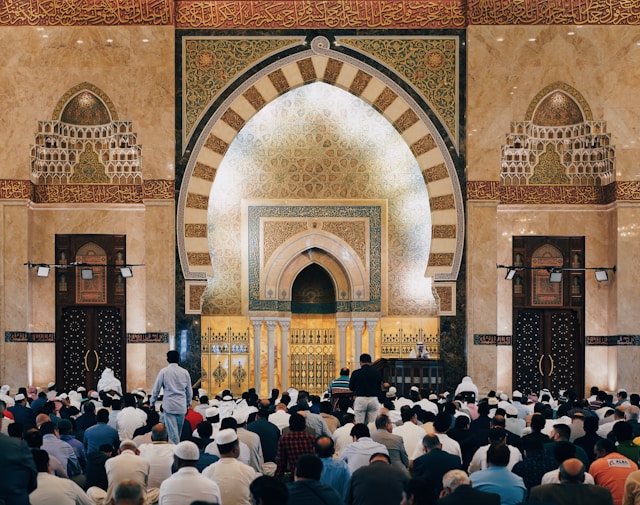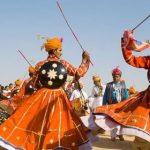Eid al-Fitr, the “Festival of Breaking the Fast,” marks the end of Ramadan, the Islamic holy month of fasting. Spanning over three days, this celebration is a significant religious observance for Muslims worldwide. Despite the unity in its purpose, Eid al-Fitr is rich with a tapestry of customs and rituals, each colored by the specific cultures that observe it. These local variations serve as testaments to the global diversity within the Muslim community and stand as a celebration of unity through a blend of unique traditions. Explore with us the diverse customs and traditions of Eid al-Fitr across the globe.
Turkey’s Joyous Uses of Kahve
In the vibrant bazaars of Istanbul, Eid morning ushers in a unique tradition centered around generosity. Here, it’s customary to start the day by offering kahve, traditional Turkish coffee, to visiting friends and family. This act symbolizes good will and hospitality, and the sharing of kahve is an important part of cementing social bonds. Alongside the rich, aromatic elixir, it’s common for Turkish delight and other delectable sweets to be served, making the reunion of loved ones a warm, sweet, and communal affair.

Photo by Yigit Danaci 🇹🇷 on Unsplash (Free for commercial use)
Indonesia’s Zakat Fitrah
Zakat Fitrah, or obligatory charitable giving, plays a significant role in Eid al-Fitr in Indonesia. Individuals contribute to this fund, which is distributed among the less fortunate, ensuring they too can partake in the feast of Eid. This act of giving epitomizes the principles of social justice embedded in Islam. The funds go towards food and other necessities, enabling the less privileged to celebrate the holiday without financial strain.
Morocco’s Art of Henna
In Morocco, one can witness the intricate artistry of henna taking on a new dimension during Eid al-Fitr. In the days leading up to the festival, women and girls flock to local artisans for complex henna designs adorning their hands and feet. This ornate work, symbolic of celebration and adornment, is often accompanied by communal prayer and shared meals. The streets come alive with the sight of beautifully dressed individuals, their henna patterns expressing the joy and renewed spirit that Eid brings.

Photo by Vitaliy Lyubezhanin on Unsplash (Free for commercial use)
Egypt’s Ka’ak al-Eid
In Egypt, one of the culinary hallmarks of Eid is Ka’ak al-Eid, a rich, buttery, and slightly sweet biscuit that is enjoyed during the festival. These confections are often prepared in the days leading up to Eid and are a cherished gift among friends and neighbors. An exchange of these biscuits is a significant part of the social structure, symbolizing unity and the spread of goodwill.
Pakistan’s Eid Shopping Culture
Eid shopping is a cultural phenomenon in Pakistan, with the preparations for the festivities beginning well in advance. The markets teem with life as individuals scout for new clothes, accessories, and gifts to exchange. The act of giving is deeply rooted in the customs, as is the belief in new attire signifying the spiritual renewal that comes with Eid.
Kuwait’s Majestic Fireworks
Kuwait’s celebrations are marked by grand gestures, none more spectacular than the breathtaking fireworks that fill the sky. Families gather at homes, beaches, and special waterfront spots to witness the displays, which symbolize joy and communal celebration. The thundering of the fireworks is accompanied by the sounds of joyful children and traditional music, creating an atmosphere of unity and jubilation.
India’s Meethi Eid Delicacies
India’s communities celebrate Eid with a delightful selection of sweets and savory dishes. From the luxurious biryani to the fragrant phirni, the meals are a reflection of the country’s diverse culinary heritage and the communal values of sharing. Meethi Eid, as it is affectionately called, is a time for friends and family to come together and enjoy these mouthwatering delicacies, bridging cultural differences with a shared love for delectable food.

Image by Mohammad Omar Siddiqui from Pixabay (Free for commercial use)
United Arab Emirates’ Zakat and Eid Prayers
In Abu Dhabi and all across the United Arab Emirates, Eid al-Fitr begins with the giving of Zakat al-Fitr, a charity that Muslims are obligated to offer before the Eid prayer. The holiday is an occasion for congregational prayer in grand mosques, where faith and community fuse to create a powerful expression of unity. Families visit cemeteries to remember their departed loved ones, signifying that the spirit of Eid is not just about joy but also about honoring the past and continuing traditions.
Eid al-Fitr is a festival embedded with a variety of cultural practices and traditions that beautifully reflect the diversity of its observers. Despite the uniqueness of these customs, the overall essence of the celebration—community, generosity, and gratitude—remains steadfast. This variety is a testament to the global nature of Islam and serves as a poignant reminder that unity and diversity can harmoniously coexist.
Photo by Rumman Amin on Unsplash (Free for commercial use)







